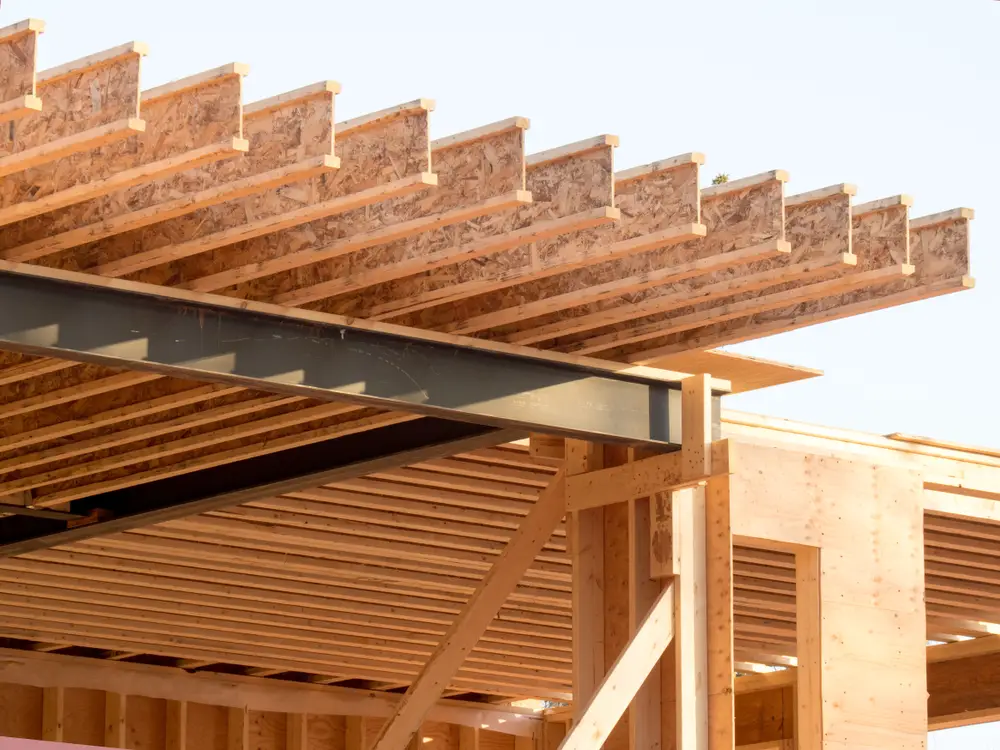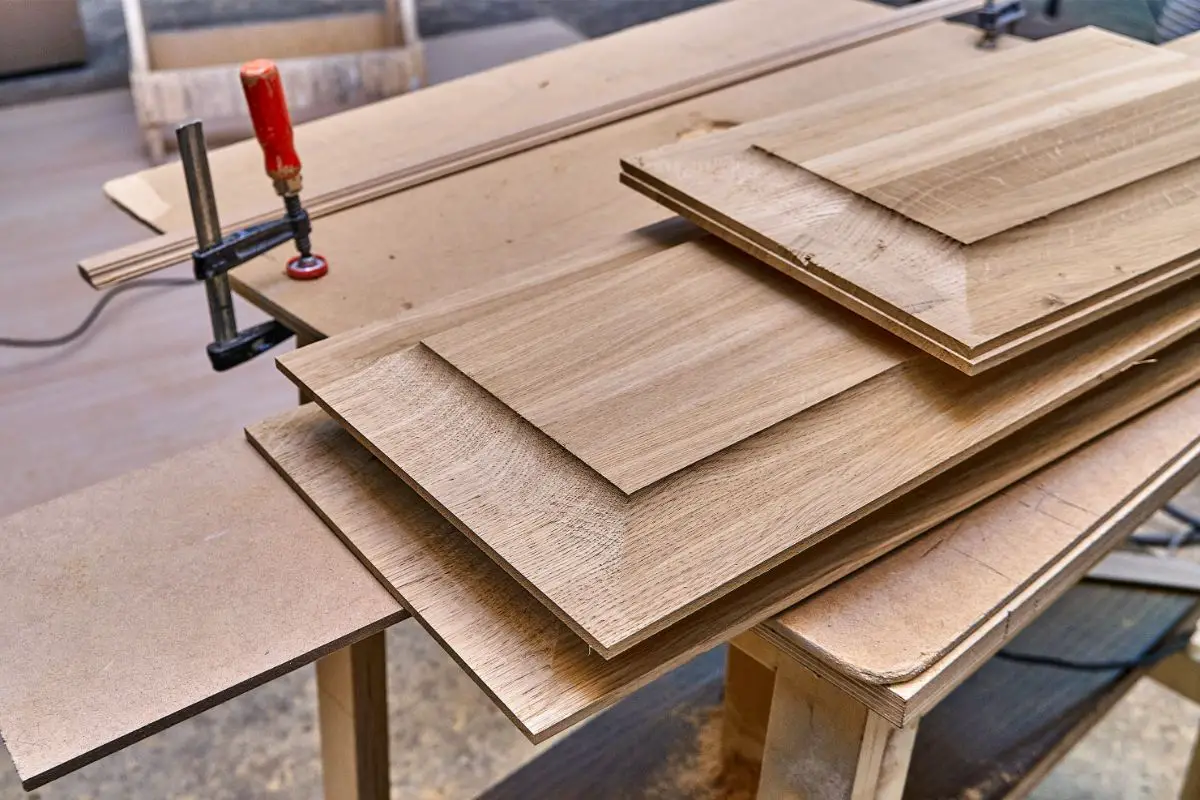In the vast landscape of American architecture, one element stands tall as a fundamental building block: the joist. As we delve into the world of construction, we discover that the joist serves as a vital support system within the building framework. Whether it’s a residential home or a towering skyscraper, joists play a crucial role in ensuring stability and strength.

But what exactly is a joist? Simply put, it’s a horizontal structural member that forms part of the framing in buildings. Its primary function is to span open spaces and transfer heavy loads to vertical members, such as beams. Think of it as the backbone of a floor or ceiling system, providing the necessary stiffness for the subfloor sheathing to function effectively.
Joists come in various materials, including wood, engineered wood, and steel. Each material has its unique characteristics and is chosen based on specific requirements. Wood joists are typically positioned vertically, with their longer faces serving as the top and bottom. Engineered wood joists feature a cross-sectional shape resembling the letter “I,” while steel joists come in shapes like “C,” “I,” “L,” and “S.” These diverse options allow builders to tailor the joist selection to project needs.
When it comes to creating a safe and stable floor or ceiling system, the depth of the joist is critical. It must exhibit the necessary strength to support the anticipated load over an extended period of time. Lateral support, known as dwang, blocking, or strutting, is crucial in enhancing the stability of joists.
Calculating the depth of wooden floor joists involves employing different formulas and guidelines, while steel joist manufacturers provide load tables to aid in selecting the appropriate sizes. By carefully considering the depth and support of joists, builders can ensure the longevity and structural integrity of their creations.
Understanding the Role and Types of Joists in Building Construction
Floor joists play a crucial role as structural components in building construction. They are responsible for supporting the weight of people, furniture, and building materials, preventing floor collapse. Without properly sized and spaced floor joists, a floor system can become unstable and unsafe.
Joist spacing is a key consideration in floor construction. It is typically determined by structural engineers based on factors such as the required load-carrying capacity. The International Residential Code provides guidelines for floor joist spacing and sizing, taking into account factors such as lumber type, species, and size.
Proper joist sizing is essential for ensuring the structural integrity of a building and meeting building code standards. The size of the floor joists should be determined based on factors such as the span requirements, lumber type, grade, and load requirements. It is important to follow the building regulations of your state and city when determining the appropriate joist spacing and size for your specific project.
When making any structural changes or notching floor joists, it is crucial to consult with a structural engineer. They can provide guidance to ensure sufficient support and prevent compromising the structural integrity of the building. By understanding the role and types of joists in building construction, we can ensure safe and stable structures for all.

Conclusion
In conclusion, beams and joists play crucial roles as structural elements in building construction. Beams provide essential support to joists, transferring loads to other structural components and contributing to the overall stability of the building. Meanwhile, joists serve as support systems for floors or ceilings, dispersing loads to the beams and ensuring structural integrity.
When it comes to roof construction, roof beams are of utmost importance. These horizontal members provide the necessary strength to support the floors or roofs above, while also adding integrity to the walls of the building. On the other hand, roof joists run horizontally across open spaces, providing support to the ceiling below and/or the floor above.
It is of paramount importance to accurately size and space both beams and joists in order to guarantee the structural integrity of a building. Proper sizing and spacing ensure that the loads are adequately supported and that the building adheres to the necessary safety standards. When working with beams and joists, it is always recommended to consult with a professional contractor or structural engineer to ensure that the design and installation are in compliance with building regulations.
As key components in building construction, beams and joists work hand in hand as structural elements. Their proper installation and maintenance contribute to the overall strength and stability of a building, making them vital considerations in any construction project.

FAQ
Q: What is a joist?
A: A joist is a horizontal structural member used in framing of buildings. It spans open spaces and transfers loads to vertical members such as beams.
Q: What materials are joists made of?
A: Joists can be made of wood, engineered wood, or steel, with each material having unique characteristics.
Q: How are wood joists positioned?
A: Wood joists are typically positioned vertically with the longer faces as the top and bottom.
Q: What are the types of steel joists?
A: Steel joists come in various shapes, such as “C”, “I”, “L”, and “S”.
Q: Why is the depth of joists important?
A: The depth of joists is critical in establishing a safe and stable floor or ceiling system.
Q: How is lateral support provided to joists?
A: Lateral support called dwang, blocking, or strutting increases the stability of joists.
Q: How is the spacing of floor joists determined?
A: The spacing of floor joists is determined by structural engineers based on factors like the required load-carrying capacity.
Q: Are there guidelines for floor joist spacing and sizing?
A: Yes, the International Residential Code provides guidelines for floor joist spacing and sizing based on various factors like lumber type, species, and size.
Q: What is floor joist span?
A: Floor joist span is the length that an individual floor joist extends between load-bearing walls or beams.
Q: Why is proper joist sizing important?
A: Proper joist sizing is essential for ensuring structural integrity and meeting building code standards.
Q: When should I consult a professional for making structural changes to a property?
A: Notching a floor joist or making structural changes to a property should only be done under the guidance of a structural engineer to ensure sufficient support and prevent compromising the structural integrity.
- What Kind of Room Has No Doors or Windows? - December 1, 2023
- What is a Powder Room? - December 1, 2023
- What Is a Kitchenette: Exploring the Features and Benefits of a Compact Kitchen - December 1, 2023










